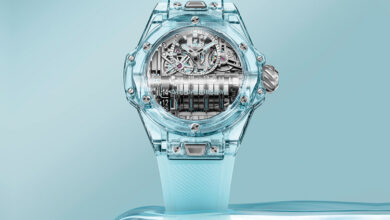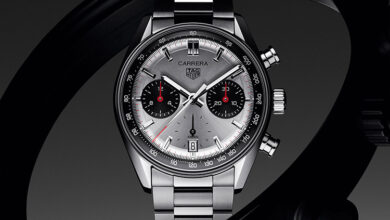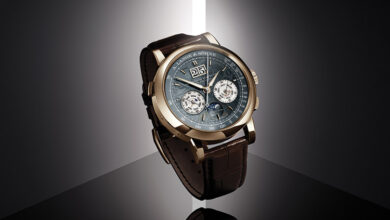URWERK creates history with AMC
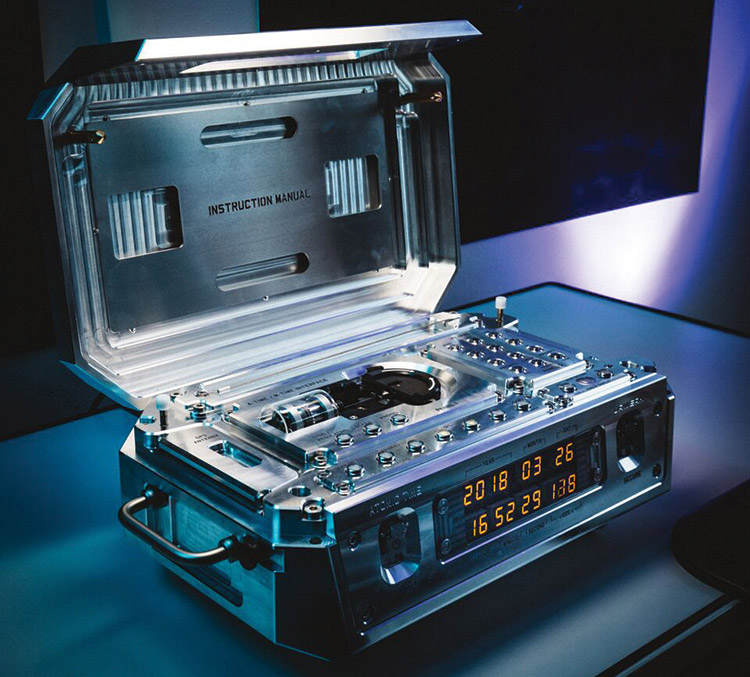
As one of the forerunners of the new wave known as nouvelle horlogerie, URWERK is a young company, established in 1997, that has already delighted watch aficionados with their creations for more than 20 years now. The brand name URWERK can be translated as an original movement — a tribute to generations of watchmakers whose work has resulted in what we know today as haute horlogerie, or superlative watchmaking. And so it should come as no surprise that such a marque unveils masterpieces of time every year.

UR-105 CT ‘Streamliner’
Evoking the vibrant, thrilling giant playground of fantasy and tension that New York was 20 years ago – when 22-year-old Felix Baumgartner joined Martin Frei who had made his home there – the UR-105 CT ‘Streamliner’ is a beautiful object that fits snugly in the palm of your hand. Its unique shape is a remarkable octagon with deep grooves along its length, with Art Deco influences apparent in its geometric angularity and symmetry. Slide the catch on the top of the case to reveal the mechanism of the UR-105 CT: a new wandering hour indication based on an openwork carousel, which carries the four satellites, each bearing three numerals for the hours.
The hours successively sweep past the minutes scale for an analogue and digital display of the time. A power-reserve indicator and digital seconds make up the rest of the information displayed on the dial. The digital seconds are remarkable in that they indicate tens of seconds. The mechanism was made using a photolithographic process, with each marker open-worked to make it as light as possible. It thus weighs less than a tenth of a gram.

Two pneumatic turbines on the back govern the self-winding rate, which can be set with a lever. In the FULL position, the slightest movement of the wrist is harnessed to rewind the barrel spring. Turn the lever to STOP to disengage the self-winding system and wind up the UR-105 using the crown. An intermediate position, RED (for reduced) engages the turbines to dampen the winding rotor and avoid overstressing the mainspring, if you are particularly active. In the Streamliner, Felix Baumgartner and Martin Frei take you to the New York of their youth, a plunge into a city of different facets, from the top of the highest skyscraper to the depths of the subway.
URWERK AMC
It was in 1795 that Abraham-Louis Breguet, in a letter to his son, described a new type of timekeeper – the sympathique clocks, which were made to work with specially designed watches. The clocks would act as master timekeepers, and control the rate and time-setting of the watches. The owner would place the watch in a special cradle set into the top of the clock, and at a certain hour, the clock would set the watch to the correct time, and adjust the rate of the watch to reduce its gain or loss to a minimum.
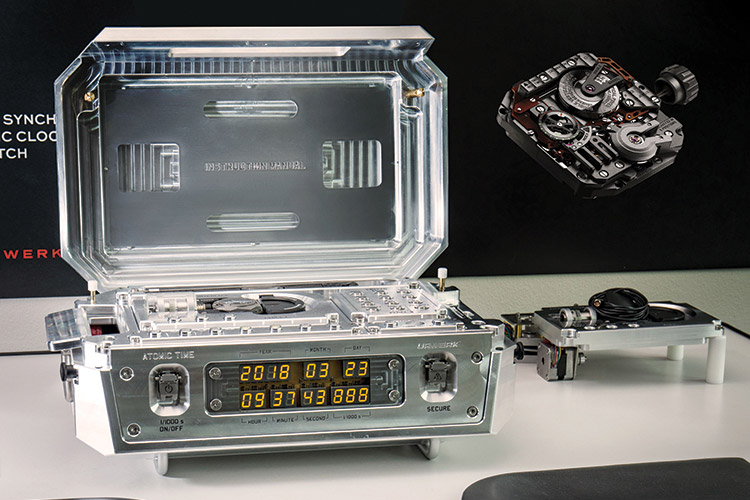
The idea of a master clock, which directly controls the accuracy and rate of a slave clock, is now built into the most basic fabric of our lives; our cell phones, smart watches, and indeed many radio-controlled wristwatches, all rely on atomic master clocks, which directly control the time they display. However, the art of making a mechanical watch, which is controlled via a mechanical linkage by a master clock, has been lost for many decades – until now.
URWERK has designed and is producing the very first master-slave clock and wristwatch, in which an atomic clock, via a complex mechanical linkage, duplicates all of the functions of Breguet’s most advanced ‘sympathique’ clocks in one device: it winds, sets, and regulates an URWERK watch, which rests in a cradle in the case of the atomic clock itself. For almost a decade, URWERK has been engaged in this long-term project, and has now decided it’s time to give horology enthusiasts a glimpse into its latest developments. Both the atomic master clock and the watch have been specially designed for the AMC project, and together they represent the first time that a mechanical watch and an atomic clock have been created to perform these three operations, via mechanical linkages, on a purely mechanical watch.
The Atomic Clock
The atomic master clock component of the URWERK AMC is in an enclosure measuring 45cmx30cmx18cm; it weighs approximately 25 kilos and the case is solid aluminium. The clock is a dual oscillator type, using ions of YIG (yttrium iron garnet) and rubidium, and has been engineered so as to allow it to be adaptable to any voltage, so that it can be used worldwide (at any voltage, from 90 to 240 volts). Special circuitry in the power supply ensures that fluctuations in voltage will not adversely affect the frequency stability of the clock. Rubidium is radioactive, but the amount of radiation produced in the rubidium cell in the AMC atomic clock so feeble that it can be blocked by a piece of paper.
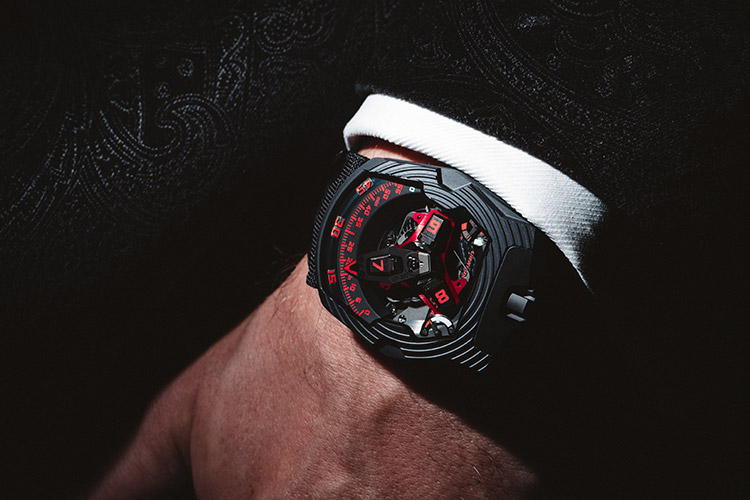
The Watch
For almost a decade, URWERK has been engaged in the uphill task of pushing the limits of mechanical possibilities to make progress in precision timekeeping. This has been a long-term project conducted away from the limelight of the wandering-hour watches. The URWERK team has enlisted the aid of experts in quantum physics and applied the latest techniques in experimental research, resulting in the development of extremely sophisticated time-measuring instruments.
The watch, like the atomic clock, is a novel construction and is designed specifically for the AMC project. It includes typical URWERK features such as the power reserve indicator and two stacked barrels for a power reserve of four days. The watch also has URWERK’s Oil Change Indicator, which shows when the movement should be serviced. One full rotation of the oil change indicator will take more than four years, with a recommended service after three-and-half years of operation.
However its most ingenious features, though unseen to the unaided eye, are revealed upon close examination of the movement. The watch is designed to fit on and work with its base — an atomic clock also conceived and developed in URWERK’s workshops. This master clock will rewind the URWERK wristwatch, set it to the correct time and if necessary adjust its rate. This world-first brings together in a single mechanism all the functions of the various sympathique clocks produced by Abraham-Louis Breguet.
The master clock interacts with the watch in three ways. The first, and perhaps the most challenging technically, involves regulating the rate of the watch. The rate of a watch is basically how quickly or slowly the balance beats, and ideally a watch would have a rate that is both perfectly in synchrony with a time standard (such as a pendulum regulator clock, or an atomic clock or time signal) and which never varies. In practice, all timekeeping systems show some variation in rate, as no oscillator is perfectly stable. The rate stability of a mechanical oscillator is inherently less than that of the oscillator in an atomic clock; with the AMC watch URWERK has created a way for an atomic clock to automatically regulate a mechanical watch to an atomic time standard – ordinarily a mechanical watch has to be manually regulated by a watchmaker. In Breguet’s sympathique clocks, the entire mechanism for adjusting the rate is actually inside the watch, and is triggered by an actuating rod extending from the clock into the watch, when the clock reads a specific time. In the AMC, the same principle is followed.
The second operation, which is distinct from the rate adjustment, is the exact synchronisation of the minutes and seconds display of the watch with that of the atomic clock. The mechanism for synchronising seconds and minutes is similar to how the reset-to-zero mechanism for a chronograph works. As in a conventional chronograph, the heartpieces rotate under the pressure of the hammers until they come to rest with the faces of the hammers at the lowest point of the cams, which corresponds to the zero position for both the seconds wheel and the minutes hand. The watch is now synchronised with the clock.
The third operation of winding the watch employs a straightforward system: a shaft extending from the clock acts on the crown to wind the watch when the latter is placed in its cradle at night.
UR-210 Black Platinum
Now URWERK presents the extraordinary UR-210 – a spectacular combination of the revolving satellite complication and retrograde minutes – in black platinum, a limited edition of 25 watches. The prominent three-dimensional minutes hand acts as a high-tech cowling that encloses the hours and carries them in turn smoothly across the scale of minutes. The case of the UR-210 Black Platinum appears to have reacted to the force of the fly-back minutes, developing a series of regular shock waves radiating from the dial. The dial of the UR-210 also features a conventional power-reserve indicator at 1 o’clock. Opposite, at 11 o’clock, a similar indication shows the winding efficiency during the last two hours. This device — a world first — calculates the energy flow, or the ratio between the energy generated and the energy consumed. Knowing the winding efficiency of your watch enables you to adjust the winding rate to ‘Full’, ‘Reduced’, or ‘Stop’. At ‘Full’, the winding rotor becomes sensitive to the slightest motion, converting it into pure energy, while at ‘Reduced’ a turbine mounted on ruby bearings starts to spin, acting as an air compressor and creating a resistance that slows down the winding rotor. At ‘Stop’, the self-winding system is disengaged and the UR-210 becomes a manually wound watch.





